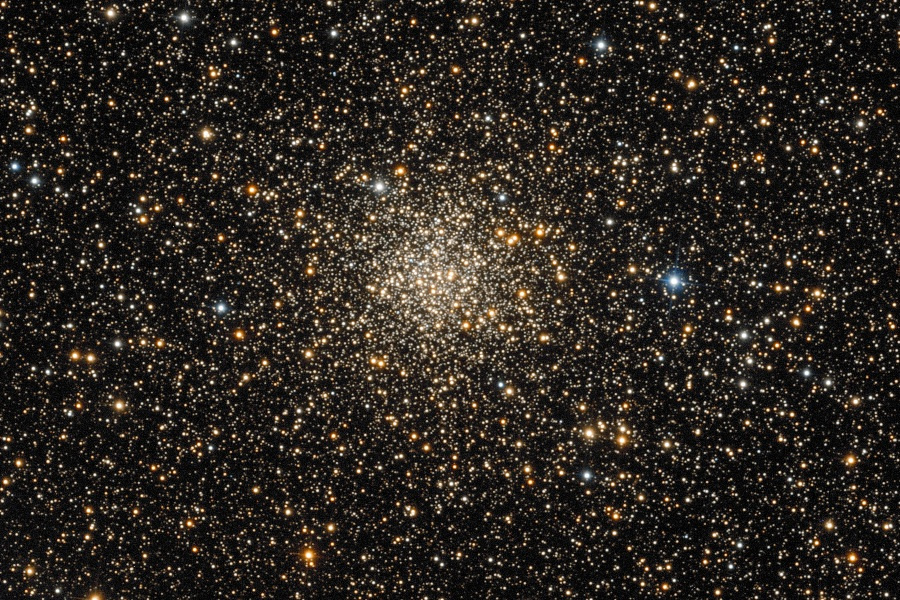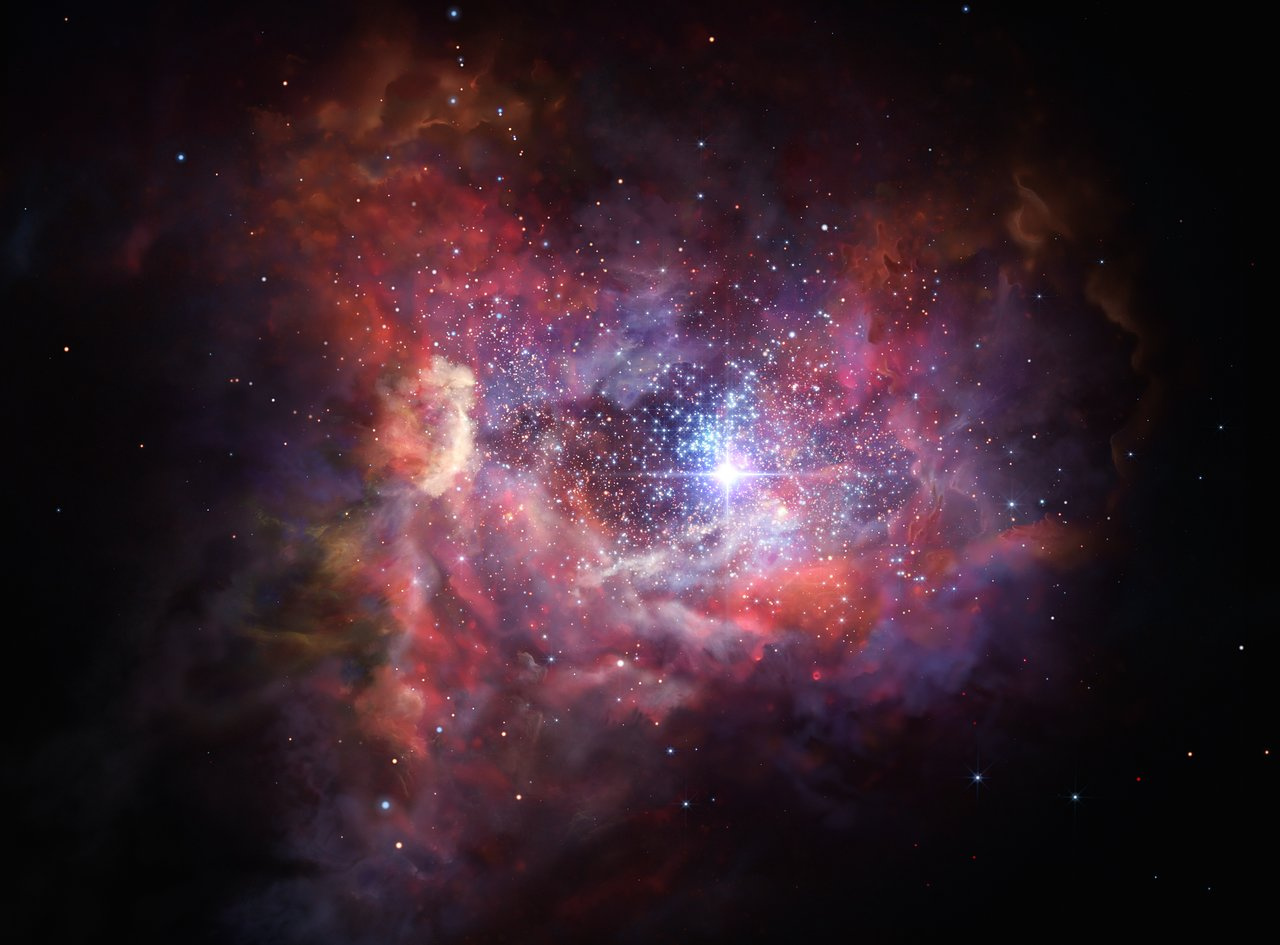How the sky looked in the past and the future

The sun is located in a very quiet place: 27.2 thousand light years from the center of the galaxy, on the edge of the Orion arm. And within the framework of human life, practically nothing happens on the sky visible to the naked eye (except for the movement of the planets). But even in the history of human civilization, this was not always the case . And this situation is not standard even for our Milky Way (well, and other galaxies, too).
And during the transition to the scale of millennia, even in the disk of our Milky Way there are places (with dense clusters of stars) where something constantly happens: let's say, the M71 globular cluster (shown in the photo) has about 10 thousand stars in diameter of only 27 light years (in the same radius from us there are less than 250 stars). Such a density of stars leads to the fact that over several thousand years, the starry sky is completely transformed, and star maps become hopelessly outdated (due to the rotation of individual stars, their groups, and groups of their groups around a common center of mass).
')
But since we are “stuck” here, let's talk about the most remarkable events that will take place in our district in the future, and have happened in the past:

After 4 billion years. Possible scenario : the collision of the Milky Way and Andromeda. Given that our opposite speed is about 110 km / s, and the transverse not more than 100 km / s - galaxies can either collide or only slightly converge during rotation around a common center of mass: the current accuracy of determining the angular position of an object is limited by technical capabilities of telescopes, and the required accuracy - will be obtained only during the data acquisition with a Gaia telescope .
One way or another, we will not succeed in observing this process from the surface of the Earth: by that time the temperature on the surface of the Earth will become so high that all the oceans evaporate , and the forms of life known to us simply cannot exist.
After 1.35 million years. The star of Gliese 710 should pass at a distance of only 0.205 ± 0.07 light years from the Sun (according to the first data of the same Gaia). This distance (13 thousand AU ) will allow this star to gravitationally affect objects in the Oort cloud (located at a distance of 50-100 thousand AU) and trigger a comet stream. The magnitude of Gliese 710 will be -2.7 (which is higher than the brightness of Mars, but lower than Venus).

The direction of the north ...

... and the South Pole of the Earth (cycle - about 26 thousand years)
After 12 thousand years. The precession of the earth's axis will lead to the fact that the place of the North Star will be taken by Vega (as it was already 14 thousand years ago). For the same reason, the ancient Greeks could with good reason call Tuban the “Polar Star”.

After 9 800 years. To us at the closest distance (3.75 light years), Barnard's star should approach - having the greatest angular velocity in the sky. However, a double approximation, for astronomers, will give little: the magnitude will decrease by one unit (but it will still be 8.5 units, which is out of sight with the naked eye), and the speed that has grown to ≈20 arc seconds per year is still not will allow to fix this process (without large telescopes, or annual observations).

2854 AD This year there will be a big parade of planets (all 8 of them + Pluto excluded from them). The last time this happened in 561 AD e.
1006 n. e. May 1 of this year marked the appearance of a new star in the sky - it was the supernova SN 1006 (SN in this case is short for supernova ; 1006 is the year of its formation; in the years when more than one is found, one or two letters are added to the name in this case ). This supernova was the brightest, recorded in the entire history of mankind, and it could be observed even during the day.

66 million years ago. If dinosaurs and telescopes and astronomers had a supermassive black hole in the center of our galaxy, they would not call Sagittarius A * (like us), but Swan A *: during this period the Sun traveled 99 ° around the galactic center (about 23.5 thousand light years).

4.6 billion years ago. In place of the solar system - a protoplanetary disk with the nascent sun in the center. Protoplanets are warmed up by the process of collapse from a gas-dust cloud, and collisions between themselves (the process of formation and cooling of the Earth took almost 100 million years). By the time the Earth was formed, the Sun already takes its place on the main sequence (for it the formation process took only 1 million years). This variation in the rate of formation is due to the difference of 332.9 thousand times in mass, and the gravitational influence of other protoplanets .

560 million years from the big bang. The period of formation of the first stars ( population III ). Due to the absence of metals (by which astronomy means all substances heavier than helium ) in the composition of the young Universe, stars with a mass of at least 10 solar ( blue giants ) could form in it. The star that gave rise to the molecular cloud from which the sun was formed does not yet exist (but a star is already forming, which will become a donor of matter for it).
150 million years from the big bang. The so-called "Dark Ages" - relic radiation has already managed to shift to the infrared zone of the spectrum, and the stars have not yet formed (by the appearance of the first stars, the average temperature in the Universe drops to -210 ° C). The formation of the first galaxies.

Relic radiation taken by the Planck Observatory : the temperature difference between this coldest and hottest spot in this photo is 800 times lower than the average temperature.
377 thousand years from the big bang. Recombination Stage: The universe becomes transparent to light, everything around is filled with a uniform yellow color (the background radiation temperature is 4 thousand K). Extrapolation of time further - gives an increase in temperature further to infinity, when approaching the singularity (to the gamma-ray zone through x-rays and ultraviolet). But we can’t physically look that far anymore (no matter how good our telescopes are).
Afterword. Human life does not allow us to fix most of the astronomical processes directly: the time of the existence of human-like monkeys is comparable to the life of the largest (and most short-lived) stars. And even the age of the existence of all life on Earth is measured by 15 galactic years , and human civilization does some 22 “galactic minutes” (or 0.0002% of the Sun’s lifetime).
However, this does not prevent astronomers from literally collecting from thousands and millions of “puzzles” (ten-year observations of stars of different ages, but of the same composition and mass) a picture of their development for hundreds of millions and billions of years.

Sometimes even greater efforts had to be resorted to by the Renaissance astronomers: Nicolaus Copernicus - spent 40 years writing the work “On the rotation of the celestial spheres”, Tycho Brahe spent 20 years observing the planets, and 22 years calculating the orbits of the planets the basis of these observations, and the Copernican heliocentric system (to convert the "circular" Copernicus system into an "elliptic" system, which is still used, with a small addition ).
Source: https://habr.com/ru/post/370695/
All Articles